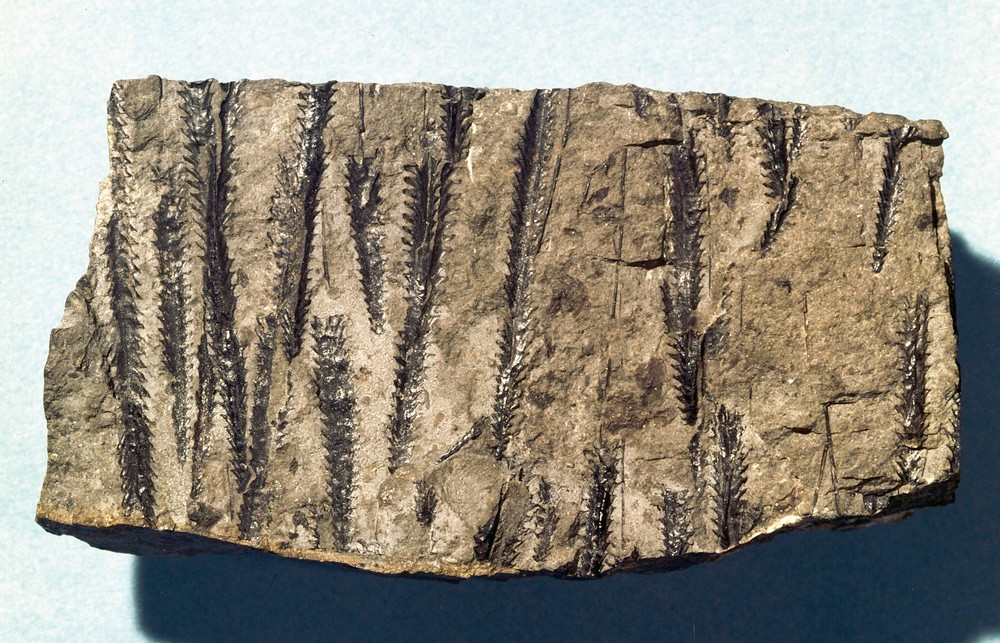| P number: | P549557 |
|---|---|
| Caption: | Diplograptus cf modestus, a graptolite. |
| Description: | Diplograptus, like all the graptoloidea, were planktonic. Each graptolite represents a colony of organisms. They lived in the seas that covered Britain during early Ordovician to early Silurian times, about 430 to 490 million years ago. Diplograptus cf modestus was a biserial, scandent graptolite, meaning it had two rows of thecae growing upwards from the initial, subtriangular juvenile part (the sicula). A thread extends from the sicula right through the colony between the two rows of sigmoidal thecae, and protrudes beyond the last pair of thecae. This may have been used to control movement of the colony in the water. The colonies in the illustration are all aligned parallel to each other due to the influence of currents at the time of deposition. Graptolites are thin, often shiny, markings on rock surfaces that look like pencil marks (their name comes from the Greek meaning 'writing in the rocks'). They are the remains of intricate colonies, some of which accommodated up to 5,000 individual animals. The zooids lived in tube-like structures called thecae comprised of collagen. Whereas the cone-like dendroid graptolites were benthonic, graptoloids were planktonic. They first evolved in the Cambrian (about 520 million years ago) and they became extinct in the Carboniferous (about 350 million years ago). |
| Photographer: | Unknown |
| Copyright statement: | Unknown |
| Orientation: | Landscape |
| Size: | 529.61 KB; 1000 x 643 pixels; 85 x 54 mm (print at 300 DPI); 265 x 170 mm (screen at 96 DPI); |
| Average Rating: | Not yet rated |
| Categories: | Best of BGS Images/ Fossils |
Reviews
There is currently no feedback

